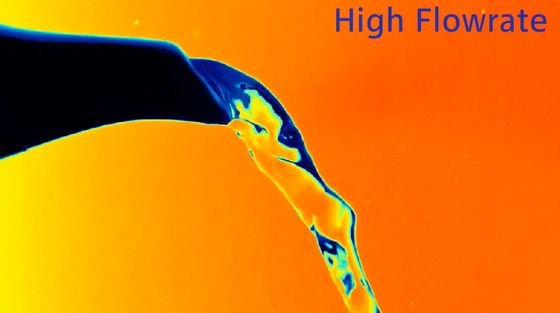The 'teapot effect', in which water drips from the spout of a teapot or teapot, is finally explained hydrodynamically.

Many people have the experience that 'when pouring a drink from a teapot or teapot, the liquid drips down the side from the spout and the table gets wet.' A research team at the Vienna University of Technology has succeeded in scientifically explaining this phenomenon, which is called the 'teapot effect.'
Developed liquid film passing a smoothed and wedge-shaped trailing edge: small-scale analysis and the'teapot effect' at large Reynolds numbers | Journal of Fluid Mechanics | Cambridge Core
Why teapots always drip: Scientists answer an age-old question --ScienceDaily
https://www.sciencedaily.com/releases/2021/11/211109120309.htm
The 'teapot effect,' in which liquid drips from spouts such as teapots and teapots, was first scientifically mentioned in 1956. Since then, many researchers have conducted research aimed at elucidating the principles behind the teapot effect, and in 1999, researchers who conducted 'calculation of how to make a spout of a teapot that does not drop' Received the Ig Nobel Prize for unique research.
A research team led by Dr. Bernhard Scheichl, who studies fluid dynamics at the Vienna University of Technology, has also worked with a team at the Department of Mathematics at the University of London to study the teapot effect. 'This is a very familiar and simple-looking effect, but it's very difficult to explain exactly in the framework of fluid mechanics,' said Scheichl.
This is a movie that clearly shows what the teapot effect is like.
Teapot-Effect --YouTube
When the liquid flows out from the spout at a high speed ...

The liquid will flow to the underside of the spout without dripping. However, if you look closely, you can also see that a small amount of liquid may be transmitted to the underside of the spout.

Even if the speed becomes medium ...

It doesn't hang down yet.

However, if the speed at which the liquid is poured slows down above a certain level, the liquid will drip down the underside of the spout. In teapots and teapots, the speed slows down just before the end of pouring the liquid, so there is a good chance that the liquid will drip.

'For the first time, we have succeeded in providing a complete theoretical explanation for why this droplet is formed and why the underside of the spout always remains wet,' said Scheichl. ..
Behind the teapot effect is a complex interaction
In addition, the effect of capillary force causes the teapot effect to begin only in the very narrow area where the wall surface of the pot and the surface of the liquid contact. Therefore, the smaller the spout angle and the more hydrophilic the pot material, the slower the liquid separates from the teapot and the more likely it is that the teapot effect will occur, the researchers explain.
Interestingly, gravity does not play a significant role in the teapot effect. Gravity is involved in determining the direction in which the liquid is poured, but the strength of gravity is not a decisive factor for the teapot effect. Therefore, although the teapot effect does not occur at the space station where there is no gravity, the teapot effect does occur at the lunar base where the gravity is lower than the earth.

Related Posts:
in Science, Posted by log1h_ik







